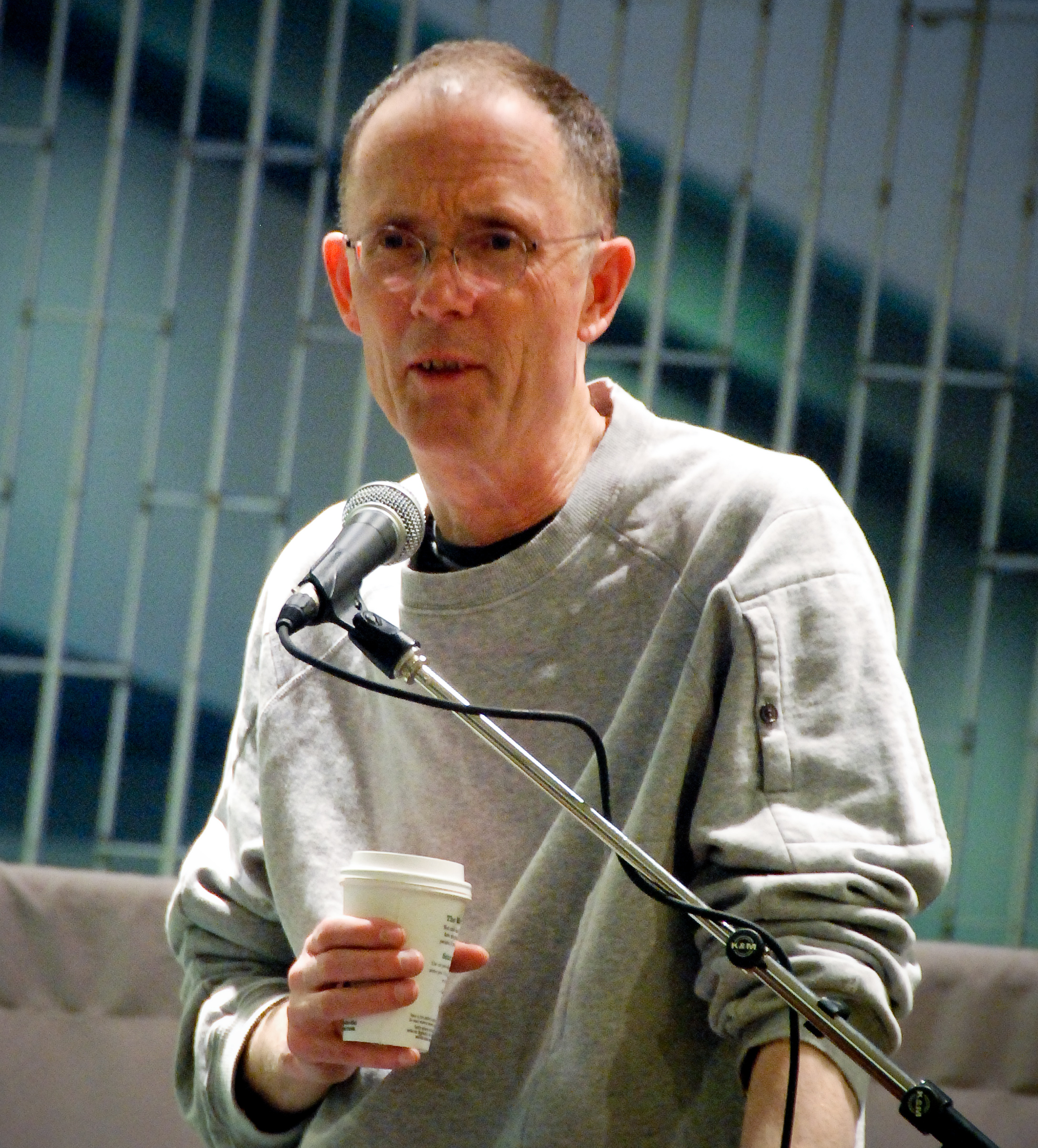|
Sprawl Trilogy
The Sprawl trilogy (also known as the Neuromancer trilogy) is William Gibson's first set of novels, and is composed of ''Neuromancer'' (1984), ''Count Zero'' (1986), and '' Mona Lisa Overdrive'' (1988). The novels are all set in the same fictional future. The Sprawl trilogy shares this setting with Gibson's short stories " Johnny Mnemonic" (1981), " Burning Chrome" (1982), and " New Rose Hotel" (1984). Setting and story arc The novels are set in a near-future world dominated by corporations and ubiquitous computing. The events of the novels are spaced over 16 years, and although there are familiar characters that appear, each novel tells a self-contained story. Gibson focuses on the effects of technology: the unintended consequences as it filters out of research labs and onto the street where it finds new purposes. He explores a world of direct mind-machine links ("jacking in"), emerging machine intelligence, and a global information space, which he calls "cyberspace". Some ... [...More Info...] [...Related Items...] OR: [Wikipedia] [Google] [Baidu] |
Neuromancer
''Neuromancer'' is a 1984 science fiction novel by American-Canadian author William Gibson. Set in a near-future dystopia, the narrative follows Case, a computer hacker enlisted into a crew by a powerful artificial intelligence and a traumatised former soldier to complete a high-stakes heist. It was Gibson's debut novel and, following its success, served as the first entry in the Sprawl trilogy, followed by '' Count Zero'' (1986) and '' Mona Lisa Overdrive'' (1988). Gibson had primarily written countercultural short stories for science-fiction periodicals before ''Neuromancer''. Influences on the novel include the detective stories of Raymond Chandler, the comic art of Jean Giraud, and William S. Burroughs's '' Naked Lunch'' (1959). ''Neuromancer'' expanded and popularised the setting and concepts of an earlier Gibson story, " Burning Chrome" (1981), which introduced cyberspace—a digital space traversable by humans—and "jacking in", a bio-mechanical method of interfacing ... [...More Info...] [...Related Items...] OR: [Wikipedia] [Google] [Baidu] |
Machine Intelligence
Artificial intelligence (AI) is the capability of computer, computational systems to perform tasks typically associated with human intelligence, such as learning, reasoning, problem-solving, perception, and decision-making. It is a field of research in computer science that develops and studies methods and software that enable machines to machine perception, perceive their environment and use machine learning, learning and intelligence to take actions that maximize their chances of achieving defined goals. High-profile applications of AI include advanced web search engines (e.g., Google Search); recommendation systems (used by YouTube, Amazon (company), Amazon, and Netflix); virtual assistants (e.g., Google Assistant, Siri, and Amazon Alexa, Alexa); autonomous vehicles (e.g., Waymo); Generative artificial intelligence, generative and Computational creativity, creative tools (e.g., ChatGPT and AI art); and Superintelligence, superhuman play and analysis in strategy games (e.g., ... [...More Info...] [...Related Items...] OR: [Wikipedia] [Google] [Baidu] |
Novel Series
A book series is a sequence of books having certain characteristics in common that are formally identified together as a group. Book series can be organized in different ways, such as written by the same author, or marketed as a group by their publisher. Publishers' reprint series Reprint series of public domain fiction (and sometimes nonfiction) books appeared as early as the 18th century, with the series ''The Poets of Great Britain Complete from Chaucer to Churchill'' (founded by British publisher John Bell in 1777). In 1841 the German Tauchnitz publishing firm launched the ''Collection of British and American Authors'', a reprint series of inexpensive paperbound editions of both public domain and copyrighted fiction and nonfiction works. This book series was unique for paying living authors of the works published even though copyright protection did not exist between nations in the 19th century. Later British reprint series were to include the ''Routledge's Railway Library' ... [...More Info...] [...Related Items...] OR: [Wikipedia] [Google] [Baidu] |
Cyberpunk Novels
Cyberpunk is a subgenre of science fiction in a dystopian futuristic setting said to focus on a combination of "low-life and high tech". It features futuristic technological and scientific achievements, such as artificial intelligence and cyberware, juxtaposed with societal collapse, dystopia or decay. Much of cyberpunk is rooted in the New Wave science fiction movement of the 1960s and 1970s, when writers like Philip K. Dick, Michael Moorcock, Roger Zelazny, John Brunner (novelist), John Brunner, J. G. Ballard, Philip José Farmer and Harlan Ellison examined the impact of technology, drug culture, and the sexual revolution while avoiding the utopian tendencies of earlier science fiction. Comics exploring cyberpunk themes began appearing as early as Judge Dredd, first published in 1977. Released in 1984, William Gibson's influential debut novel ''Neuromancer'' helped solidify cyberpunk as a genre, drawing influence from punk subculture and early hacker culture. Frank Miller's ''Ro ... [...More Info...] [...Related Items...] OR: [Wikipedia] [Google] [Baidu] |
Works By William Gibson
Works may refer to: People * Caddy Works (1896–1982), American college sports coach * John D. Works (1847–1928), California senator and judge * Samuel Works (c. 1781–1868), New York politician Albums * ''Works'' (Pink Floyd album), a Pink Floyd album from 1983 * ''Works'', a Gary Burton album from 1972 * ''Works'', a Status Quo album from 1983 * ''Works'', a John Abercrombie album from 1991 * ''Works'', a Pat Metheny album from 1994 * ''Works'', an Alan Parson Project album from 2002 * ''Works Volume 1'', a 1977 Emerson, Lake & Palmer album * ''Works Volume 2'', a 1977 Emerson, Lake & Palmer album * '' The Works'', a 1984 Queen album Other uses *Good works, a topic in Christian theology * Microsoft Works, a collection of office productivity programs created by Microsoft * IBM Works, an office suite for the IBM OS/2 operating system * Mount Works, Victoria Land, Antarctica See also * The Works (other) * Work (other) Work may refer to: * Work ( ... [...More Info...] [...Related Items...] OR: [Wikipedia] [Google] [Baidu] |
Sprawl Trilogy
The Sprawl trilogy (also known as the Neuromancer trilogy) is William Gibson's first set of novels, and is composed of ''Neuromancer'' (1984), ''Count Zero'' (1986), and '' Mona Lisa Overdrive'' (1988). The novels are all set in the same fictional future. The Sprawl trilogy shares this setting with Gibson's short stories " Johnny Mnemonic" (1981), " Burning Chrome" (1982), and " New Rose Hotel" (1984). Setting and story arc The novels are set in a near-future world dominated by corporations and ubiquitous computing. The events of the novels are spaced over 16 years, and although there are familiar characters that appear, each novel tells a self-contained story. Gibson focuses on the effects of technology: the unintended consequences as it filters out of research labs and onto the street where it finds new purposes. He explores a world of direct mind-machine links ("jacking in"), emerging machine intelligence, and a global information space, which he calls "cyberspace". Some ... [...More Info...] [...Related Items...] OR: [Wikipedia] [Google] [Baidu] |
TheGuardian
''The Guardian'' is a British daily newspaper. It was founded in Manchester in 1821 as ''The Manchester Guardian'' and changed its name in 1959, followed by a move to London. Along with its sister paper, '' The Guardian Weekly'', ''The Guardian'' is part of the Guardian Media Group, owned by the Scott Trust Limited. The trust was created in 1936 to "secure the financial and editorial independence of ''The Guardian'' in perpetuity and to safeguard the journalistic freedom and liberal values of ''The Guardian'' free from commercial or political interference". The trust was converted into a limited company in 2008, with a constitution written so as to maintain for ''The Guardian'' the same protections as were built into the structure of the Scott Trust by its creators. Profits are reinvested in its journalism rather than distributed to owners or shareholders. It is considered a newspaper of record in the UK. The editor-in-chief Katharine Viner succeeded Alan Rusbridger in 201 ... [...More Info...] [...Related Items...] OR: [Wikipedia] [Google] [Baidu] |
Steven Poole
Steven Poole (born 1972) is a British author, journalist, and video game theorist. He particularly concerns himself with the abuse of language and has written two books on the subject: ''Unspeak'' (2006) and ''Who Touched Base in My Thought Shower?'' (2013). Biography Poole studied English at Emmanuel College, Cambridge, and has subsequently written for publications including ''The Independent'', ''The Guardian'', '' The Times Literary Supplement'', ''The Sunday Times'', and the ''New Statesman''. He has published two books and currently writes a weekly nonfiction book-review column in the Saturday ''Guardian'' called Et Cetera, as well as regular longer book reviews, plus a monthly column in '' Edge'' magazine. Poole was invited to deliver the opening keynote address at the 2006 Sydney Writers' Festival, and also gave a keynote at the 2008 Future and Reality of Gaming conference in Vienna. Books ''Trigger Happy'' and ''Trigger Happy 2.0'' '' Trigger Happy'' was published in ... [...More Info...] [...Related Items...] OR: [Wikipedia] [Google] [Baidu] |
Story Arc
A story arc (also narrative arc) is the chronological construction of a plot in a novel or story. It can also mean an extended or continuing narrative, storyline in episode, episodic storytelling media such as television, comic books, comic strips, boardgames, board games, video games, and films with each episode following a dramatic arc. On a television program, for example, the story would unfold over many episodes. In television, the use of the story arc is common in sitcoms, and even more so in soap operas. In a traditional Hollywood film, the story arc usually follows a three-act structure. Webcomics are more likely to use story arcs than comic strip, newspaper comics, as most webcomics have readable archives online that a newcomer to the strip can read in order to understand what is going on. Although story arcs have existed for decades, one of the first appearances of the term was in 1973 by ''Time Magazine'' for a synopsis of the movie ''The Friends of Eddie Coyle'': "He ac ... [...More Info...] [...Related Items...] OR: [Wikipedia] [Google] [Baidu] |
Northeast Megalopolis
The Northeast megalopolis, also known as the Northeast Corridor, Acela Corridor, Boston–Washington corridor, BosWash, or BosNYWash, is the most populous megalopolis exclusively within the United States, with slightly over 50 million residents as of 2022. The nickname "BosWash" for the region was first used by futurist Herman Kahn in a 1967 essay. It is the world's largest megalopolis by economic output. Located primarily on the Atlantic Coast in the Northeastern United States, the Northeast megalopolis extends from the northern suburbs of Boston to Washington, D.C., running roughly southwesterly along a section of U.S. Route 1, Interstate 95, and the Northeast Corridor train line. It is sometimes defined more broadly to include other urban regions, including the Richmond and Hampton Roads regions to the south; Portland, Maine, and Manchester, New Hampshire, to the north; and Harrisburg, Pennsylvania, to the west. The region includes many of the nation's most populated me ... [...More Info...] [...Related Items...] OR: [Wikipedia] [Google] [Baidu] |
Cyberspace
Cyberspace is an interconnected digital environment. It is a type of virtual world popularized with the rise of the Internet. The term entered popular culture from science fiction and the arts but is now used by technology strategists, security professionals, governments, military and industry leaders and entrepreneurs to describe the domain of the global technology environment, commonly defined as standing for the global network of interdependent information technology infrastructures, telecommunications networks and computer processing systems. Others consider cyberspace to be just a notional environment in which communication over computer networks occurs. The word became popular in the 1990s when the use of the Internet, networking, and digital communication were all growing dramatically; the term ''cyberspace'' was able to represent the many new ideas and phenomena that were emerging. As a social experience, individuals can interact, exchange ideas, share information, provi ... [...More Info...] [...Related Items...] OR: [Wikipedia] [Google] [Baidu] |




